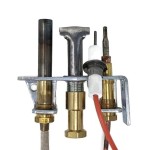Glass Cleaner for Fireplace Doors: Maintaining Clarity and Safety
Fireplaces provide warmth and ambiance, but the accumulation of soot, creosote, and ash on the glass doors can significantly diminish the enjoyment of a crackling fire. Regular cleaning is essential not only for aesthetic reasons but also for maintaining optimal fireplace performance and safety. Choosing the right glass cleaner and employing the correct cleaning techniques are crucial for achieving a clear view of the fire and preventing damage to the glass.
The deposits that accumulate on fireplace doors are typically acidic and can etch the glass over time if left unattended. Furthermore, a thick layer of soot can insulate the glass, potentially causing it to overheat and crack. Therefore, selecting a glass cleaner specifically formulated for fireplace doors is paramount. Commercial fireplace glass cleaners are designed to dissolve these stubborn deposits without harming the glass or any surrounding metal components. Household cleaners, particularly those containing ammonia or abrasive agents, should be avoided as they can damage the glass surface.
The frequency of cleaning depends on the frequency of fireplace use and the type of wood burned. Regularly burning softwoods, such as pine, tends to produce more soot than hardwoods like oak or maple. Inspecting the glass doors periodically and cleaning them whenever significant buildup is observed will help maintain clarity and prevent the deposits from becoming too difficult to remove.
Understanding Soot and Creosote Composition
Soot and creosote are byproducts of incomplete combustion. Soot consists primarily of fine carbon particles, while creosote is a more complex mixture of volatile organic compounds, tars, and ash. Both substances are flammable and pose a fire hazard if allowed to accumulate in the chimney. While the primary concern is chimney buildup, the deposition of these substances on fireplace doors also warrants attention.
The composition of the deposits on the glass doors will vary depending on the type of wood burned, the efficiency of the fireplace, and the presence of any additives in the wood (e.g., treated lumber should never be burned in a fireplace). Understanding the nature of these deposits helps in selecting the appropriate cleaning agent. Cleaners formulated specifically for fireplace glass doors are typically alkaline, which effectively neutralizes the acidic components of soot and creosote.
The cleaning process involves breaking down the chemical bonds within the deposits, allowing them to be easily wiped away. Some cleaners contain solvents that dissolve the tarry components of creosote, while others contain mild abrasives that help to scrub away stubborn soot particles. However, the abrasive particles must be fine enough to avoid scratching the glass.
Aside from selecting the right cleaner, the environment in which the fireplace resides also contributes to the collection of dust and grime on the glass. Air pollutants, pet dander, and smoke from cooking or cleaning products can all attach to the glass, making it appear duller and dirtier than it is; especially in homes with high humidity.
Selecting the Appropriate Cleaning Agent
Several types of fireplace glass cleaners are available on the market, each with its own strengths and weaknesses. These can generally be categorized as aerosols, liquids, gels, or creams. Aerosol sprays are convenient to apply and often contain solvents that quickly dissolve soot and creosote. Liquid cleaners typically require more scrubbing but can be more effective on heavily soiled glass. Gel and cream cleaners are designed to cling to the glass surface, allowing the active ingredients to work for a longer period of time, which is particularly useful for removing stubborn deposits.
When selecting a cleaner, it is important to read the product label carefully and ensure that it is specifically designed for fireplace glass doors. Avoid cleaners that contain ammonia, bleach, or strong abrasives, as these can damage the glass or any metal trim. Opt for cleaners that are non-toxic, biodegradable, and low-VOC (volatile organic compound) to minimize environmental impact and potential health risks.
Some cleaners come in concentrated form and require dilution with water. Following the manufacturer's instructions carefully is essential to ensure that the cleaner is effective without being too harsh. Testing the cleaner on a small, inconspicuous area of the glass before applying it to the entire surface is always a good practice to ensure that it does not cause any discoloration or damage.
In addition to commercial cleaners, some individuals prefer to use homemade solutions. A mixture of vinegar and water can be effective for removing light soot and grime. However, homemade solutions may not be as effective on heavily soiled glass or for removing creosote. It is crucial to research any homemade cleaner thoroughly for effectiveness and ensure it won't damage the glass before testing it. Always use proper safety guidelines when considering making your own cleaner.
Step-by-Step Cleaning Procedure
Before cleaning the fireplace glass doors, ensure that the fireplace is completely cool to prevent burns. Gather the necessary supplies, including the selected glass cleaner, a soft cloth or sponge, a scraper (optional, for removing thick deposits), and a bucket of clean water. Protect the surrounding floor and fireplace hearth with a drop cloth or newspaper to prevent spills and messes.
Begin by removing any loose debris from the glass surface with a brush or vacuum cleaner. If there are thick deposits of soot or creosote, use a plastic scraper to gently remove them. Avoid using metal scrapers, as they can scratch the glass.
Apply the glass cleaner to the glass surface, following the manufacturer's instructions. If using an aerosol spray, hold the can approximately 6-8 inches from the glass and spray evenly. If using a liquid, gel, or cream cleaner, apply it to a soft cloth or sponge and wipe it onto the glass. Allow the cleaner to sit on the glass for a few minutes to allow the active ingredients to dissolve the deposits.
Using a clean, damp cloth or sponge, wipe away the cleaner and the dissolved deposits. Rinse the cloth or sponge frequently with clean water to prevent spreading the dirt around. For stubborn deposits, a second application of cleaner may be necessary. Pay special attention to the edges of the glass, where soot and creosote tend to accumulate.
Once the glass is clean, dry it with a clean, dry cloth or paper towel to prevent streaking. If streaks persist, try using a glass cleaner specifically designed for streak-free cleaning. Inspect the glass for any remaining deposits and repeat the cleaning process if necessary.
Avoid getting water or cleaner on any metal components surrounding the glass. If this happens, wipe them dry immediately with a clean cloth. Some fireplace doors have decorative trim or intricate designs that may require special cleaning techniques. Refer to the manufacturer's instructions for specific cleaning recommendations.
After cleaning the glass doors, consider cleaning the interior of the fireplace as well. Regular removal of ash and debris will help to improve fireplace efficiency and reduce the risk of chimney fires. Ensure that the fireplace is completely cool before cleaning the interior.
In some instances, fireplace doors can be completely removed to allow for better cleaning access. Typically, there are a few screws holding the frame in place. Once these are removed, the frame encasing the glass can simply be lifted out. This can be advantageous when dealing with hard to clean areas, such as corners and edges.
When cleaning the glass, also inspect the condition of the door's seals. As seals age, they can become brittle and allow air to leak in and out of the fireplace, affecting its efficiency and potentially creating a fire hazard. Replace the seal if they appear to be cracked or worn. Consult the fireplace manufacturer for the correct replacement seal.
By following these steps and selecting the appropriate cleaning agent, individuals can maintain clear and safe fireplace doors, enhancing their enjoyment of a cozy fire.

Rutland Rd 565 White Off Glass Ceramic Cleaning Cream 8 Fl Oz

Gas Stove Glass Cleaner Country And Patio

How To Clean Fireplace Glass The Right Way

White Off Fireplace Glass Cleaner R Heating Air Conditioning

April House Cleaning Checklist

Hearthglass Creme And Microfiber Sham Stove Glass Cleaner

Rutland Rd 82 Fireplace Glass Cleaner Spray On 32 Fl Oz

Meeco Gas Fireplace Glass Cleaner

Rutland White Off 565 Glass Cleaner 8 Oz For

How To Clean Wood Burner Glass Properly Direct Stoves
Related Posts








